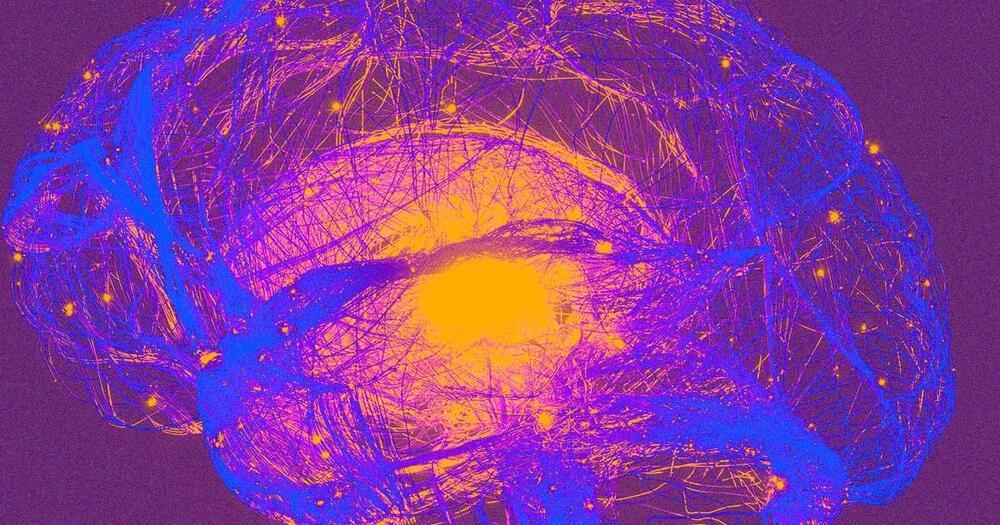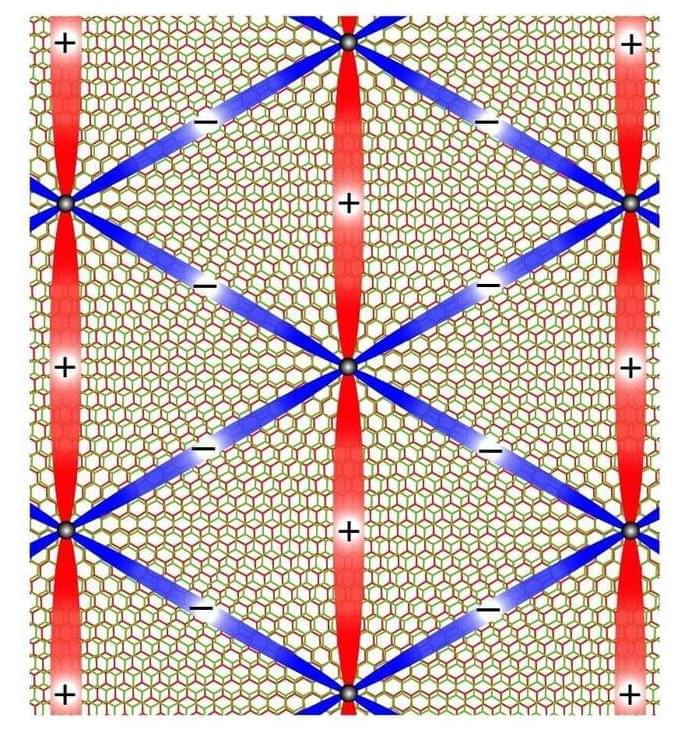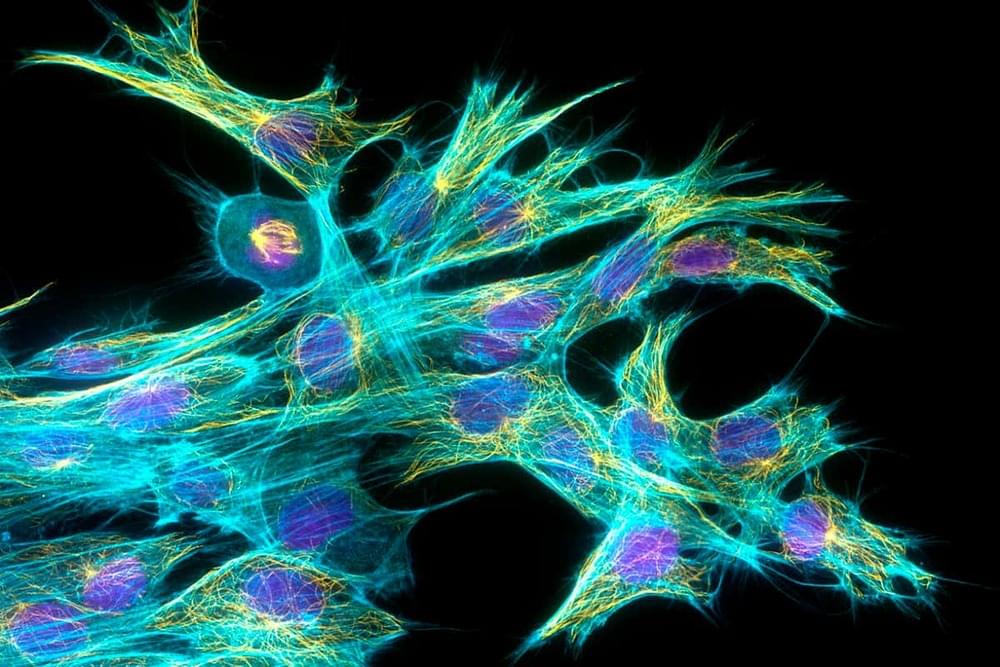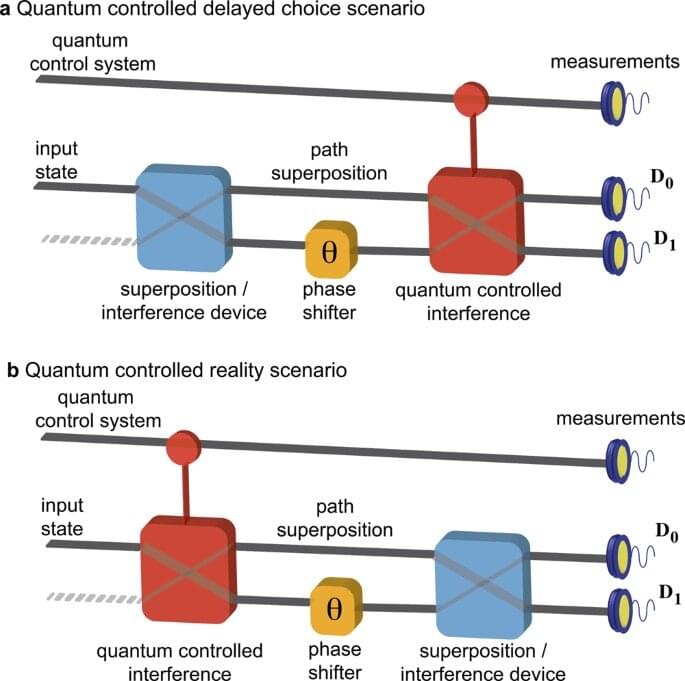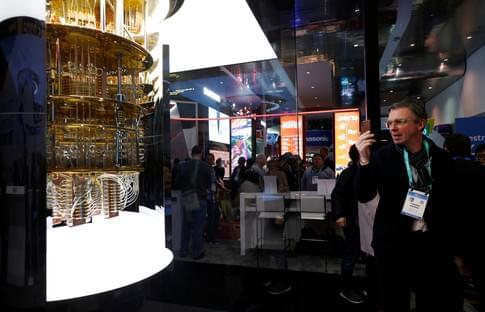A controversial theory suggesting that quantum effects in the brain could explain consciousness may hold more weight than scientists originally thought.
Category: quantum physics – Page 520
Superconductors are materials that conduct electrical current with practically no electrical resistance at all. This ability makes them extremely interesting and attractive for a plethora of applications such as loss-less power cables, electric motors and generators, as well as powerful electromagnets that can be used for MRI imaging and for magnetic levitating trains. Now, researchers from Nagoya University have detailed the superconducting nature of a new class of superconducting material, magic-angle twisted bilayer graphene.
For a material to behave as a superconductor, low temperatures are required. Most materials only enter the superconducting phase at extremely low temperatures, such as −270°C, which is lower than those measured in outer space. This severely limits their practical applications because such extensive cooling requires very expensive and specialized liquid helium cooling equipment. This is the main reason superconducting technologies are still in their infancy.
High temperature superconductors (HTS), such as some iron and copper-based examples, enter the superconducting phase above −200°C, a temperature that is more readily achievable using liquid nitrogen which cools down a system to −195.8°C. However, the industrial and commercial applications of HTS have been thus far limited. Currently known and available HTS materials are brittle ceramic materials that are not malleable and cannot be made into useful shapes like wires. In addition, they are notoriously difficult and expensive to manufacture. This makes the search for new superconducting materials critical and a strong focus of research for physicists like Prof. Hiroshi Kontani and Dr. Seiichiro Onari from the Department of Physics, Nagoya University.
Experiments on how anaesthetics alter the behaviour of tiny structures found in brain cells bolster the controversial idea that quantum effects in the brain might explain consciousness.
Scientists from Beijing set a new quantum secure direct communication (QSDC) world record of 102.2 km (64 miles), a massive leap over the previous record of 18 km (11 miles), according to The Eurasian Times.
The research could eventually lead to a massive quantum communications network that would be virtually hacker-proof due to the nature of the technology.
The researchers, who published their findings in a paper in Nature, demonstrated transmission speeds of 0.54 bits per second, much slower than communications using classical computing devices. Still, this was fast enough for phone call and text message encryption over a distance of 30 km (19 miles).
Image by: Arkadiusz Jadczyk.
The word fractal has become increasingly popular, although the concept started more than two centuries ago in the 17th century with prominent and prolific mathematician and philosopher Gottfried Wilhelm Leibnitz is believed to have addressed for the first time the notion of recursive self-similarity, and it wasn’t until 1960 that the concept was formally stabilized both theoretically and practically, through the mathematical development and computerized visualizations by Benoit Mandelbrot, who settled on the name “fractal”.
In a new report now published in Nature Communications Physics, Pedro R. Dieguez and an international team of scientists in quantum technologies, functional quantum systems and quantum physics, developed a new framework of operational criterion for physical reality. This attempt facilitated their understanding of a quantum system directly via the quantum state at each instance of time. During the work, the team established a link between the output visibility and elements of reality within an interferometer. The team provided an experimental proof-of-principle for a two-spin-½ system in an interferometric setup within a nuclear magnetic resonance platform. The outcomes validated Bohr’s original formulation of the complementarity principle.
Physics according to Niels Bohr
Bohr’s complementarity principle states that matter and radiation can be submitted to a unifying framework where either element can behave as a wave or a particle, based on the experimental setup. According to Bohr’s natural philosophy, the nature of individuality of quantum systems is discussed relative to the definite arrangement of whole experiments. Almost a decade ago, physicists designed a quantum delayed choice experiment (QDCE), with a beam splitter in spatial quantum superposition to render the interferometer to have a “closed + open” configuration, while the system represented a hybrid “wave + particle” state. Researchers had previously coupled a target system to a quantum regulator and tested these ideas to show how photons can exhibit wave-like or particle-like behaviors depending on the experimental technique used to measure them.
In a discovery that could speed research into next-generation electronics and LED devices, a University of Michigan research team has developed the first reliable, scalable method for growing single layers of hexagonal boron nitride on graphene.
The process, which can produce large sheets of high-quality hBN with the widely used molecular-beam epitaxy process, is detailed in a study in Advanced Materials.
Graphene-hBN structures can power LEDs that generate deep-UV light, which is impossible in today’s LEDs, said Zetian Mi, U-M professor of electrical engineering and computer science and a corresponding author of the study. Deep-UV LEDs could drive smaller size and greater efficiency in a variety of devices including lasers and air purifiers.
To fully embrace the benefits of quantum computing in the future, we need to focus on education and workforce development and become quantum-ready today.
The 13-year-old daughter of a friend visiting my workplace — the IBM Research lab in Zurich — seemed puzzled. She knew I worked in a research lab and I that work with computers, but the computers she knows don’t typically resemble the chandelier-like structure that hung from the ceiling in front of us.
Yet, it is a computer – a quantum computer. And while someone in their early teens right now can be excused for not knowing what a quantum computer is, I would very much like that to change.
A special form of light made using an ancient Namibian gemstone could be the key to new light-based quantum computers, which could solve long-held scientific mysteries, according to new research led by the University of St Andrews.
The research, conducted in collaboration with scientists at Harvard University in the US, Macquarie University in Australia and Aarhus University in Denmark and published in Nature Materials, used a naturally mined cuprous oxide (Cu2O) gemstone from Namibia to produce Rydberg polaritons, the largest hybrid particles of light and matter ever created.
Rydberg polaritons switch continually from light to matter and back again. In Rydberg polaritons, light and matter are like two sides of a coin, and the matter side is what makes polaritons interact with each other.
For World Quantum Day, the Google Quantum AI team is introducing people to the world of quantum computing by teaming up with Doublespeak Games to make The Qubit Game, a journey into quantum computing.
